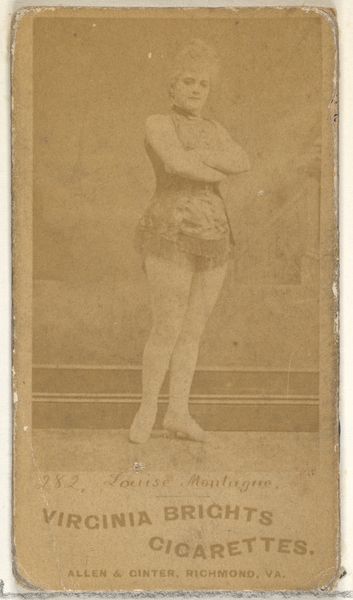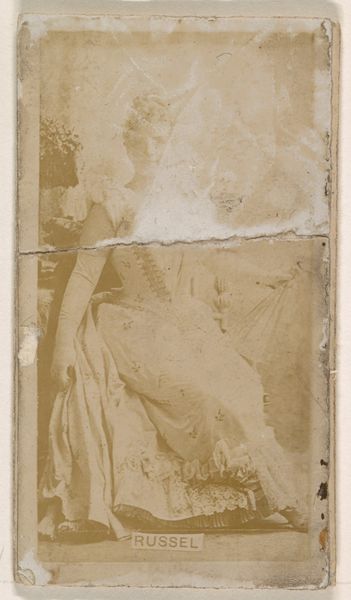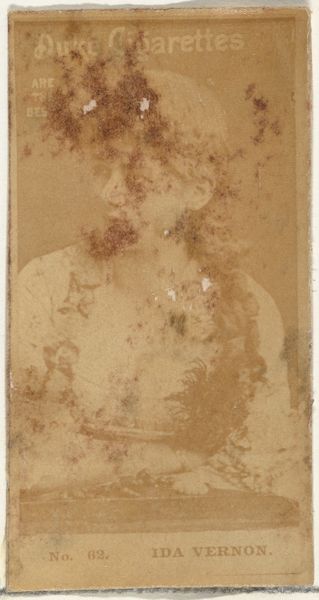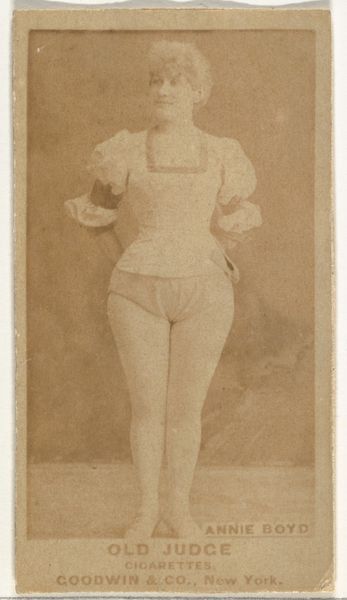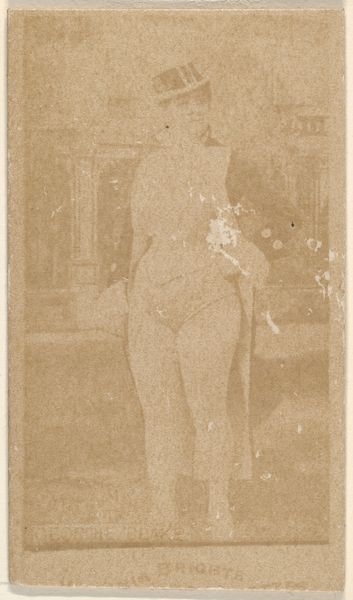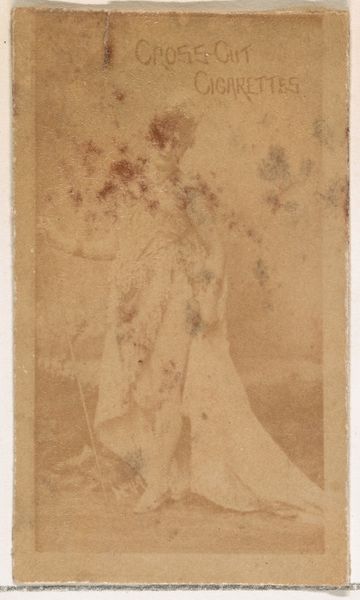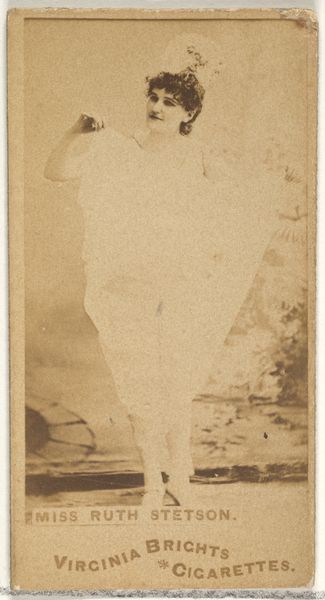
Card Number 322, Empire Group, from the Actors and Actresses series (N145-7) issued by Duke Sons & Co. to promote Duke Cigarettes 1880s
0:00
0:00
Dimensions: Sheet: 2 11/16 × 1 3/8 in. (6.8 × 3.5 cm)
Copyright: Public Domain
Editor: This is Card Number 322, Empire Group, from the Actors and Actresses series, made in the 1880s by W. Duke, Sons & Co., using drawing and printmaking techniques. It's a small card, a faded sepia tone… almost feels like a glimpse into a forgotten era of entertainment. How would you approach understanding a piece like this? Curator: I see it as a powerful illustration of the intersection of labor, material culture, and commerce. The print isn't just a portrait, it's also an advertisement – a component of the growing consumer culture. Who were these performers? What were their working conditions? The 'Empire Group' wasn't just entertaining; they were working, producing value for the Duke tobacco company through their image. The material of the card itself, cheap and mass-produced, speaks volumes about the nature of mass consumption. What can it reveal about the cultural context that it came from? Editor: That's fascinating! So, you're less interested in their artistic skill, and more in how it was produced, distributed, and consumed? Curator: Exactly. The 'skill,' for me, resides in how effectively the company leveraged their image to sell cigarettes, in the printing process itself, and in how this object circulated within a particular economic system. It questions the very idea of "high art," reminding us of the labor involved in ALL cultural production. Look closely at the degradation of the print – what does it say about value, disposability, and time? Editor: That's a really different way of looking at art than I'm used to! I was focused on the people and the artistry, not so much on… the capitalism behind it. Curator: Precisely! The portrait is merely a surface. What lies beneath is a network of power, labor, and material reality waiting to be revealed. Think of it not as just art, but as evidence. Editor: I'll definitely be paying more attention to the production side of things now, and how commercial forces shape the art we see. It gives these seemingly simple images so much more depth. Curator: It's about looking beyond the aesthetic, and towards the economic and social processes embedded in the materials and modes of production themselves.
Comments
No comments
Be the first to comment and join the conversation on the ultimate creative platform.



